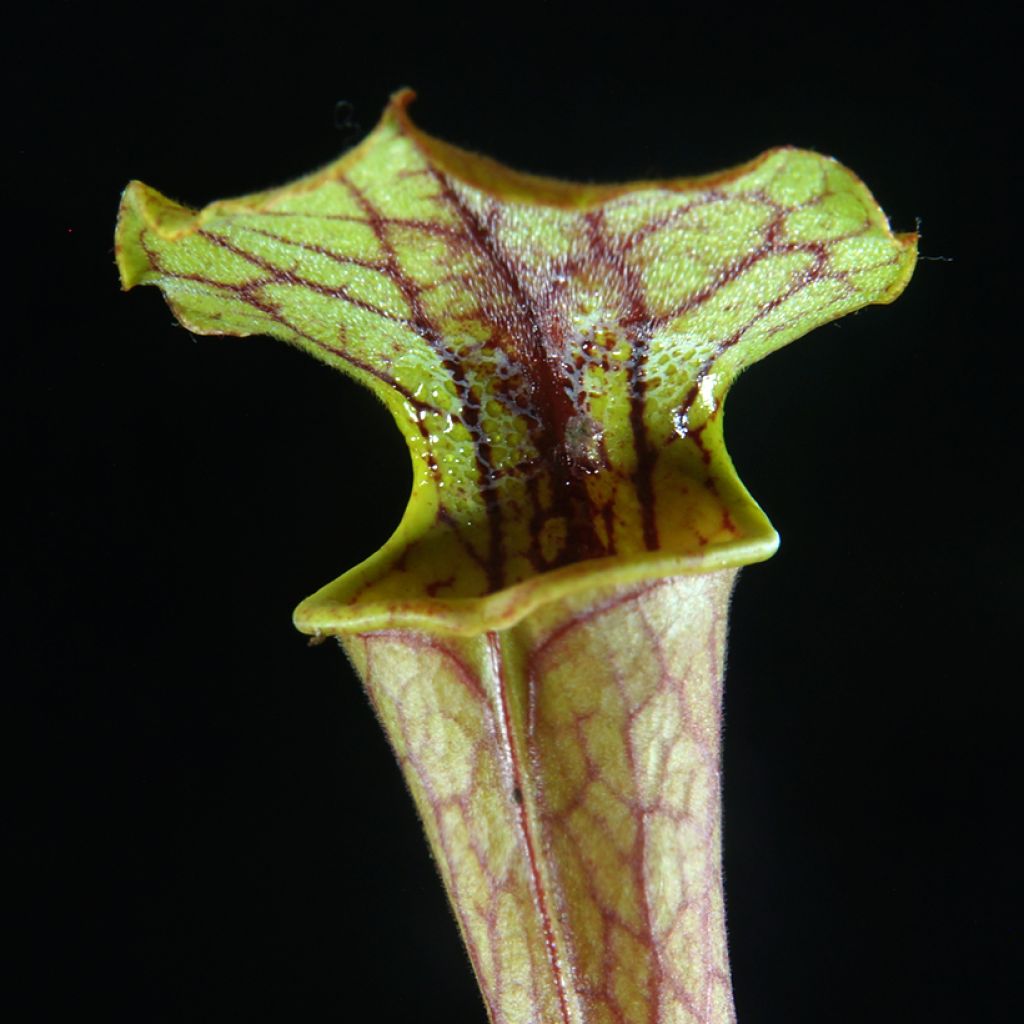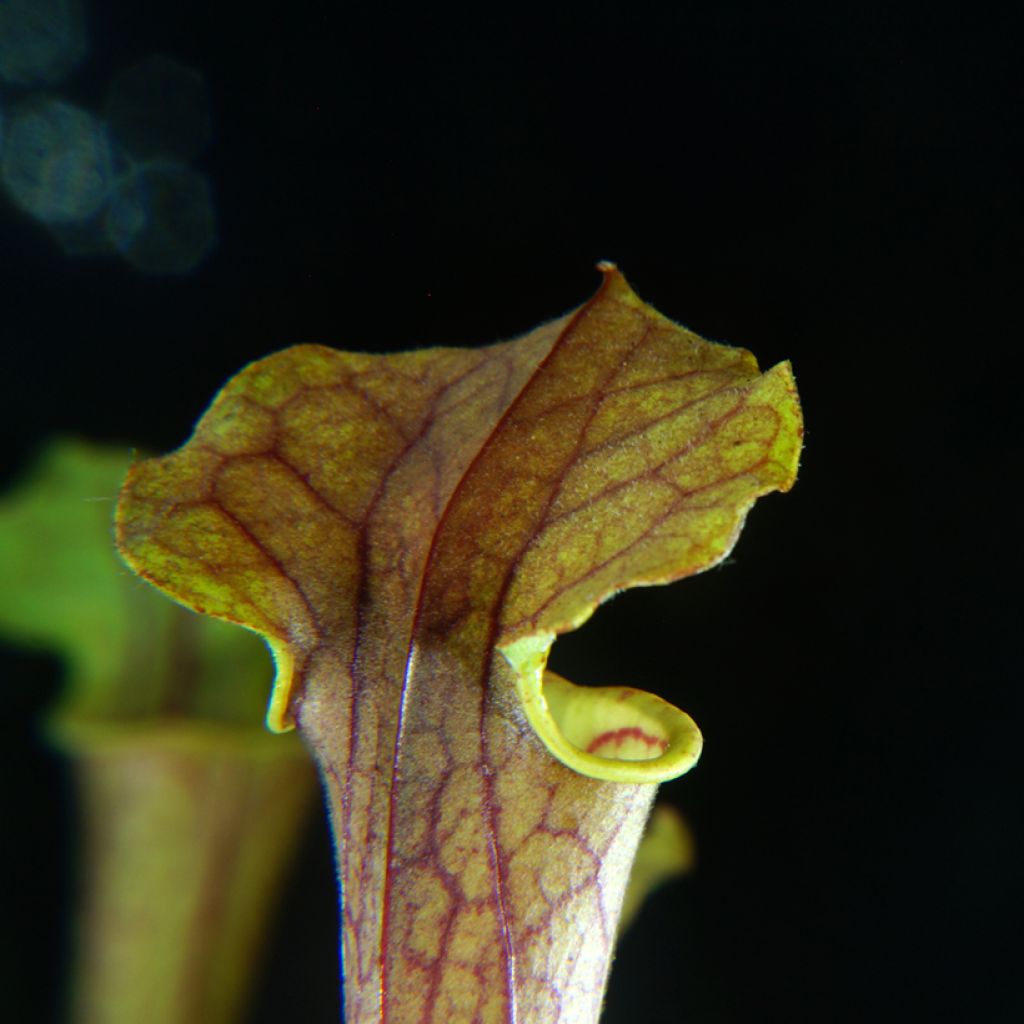

Sarracenia Tygo - Sarracénie, plante carnivore


Sarracenia Tygo - Sarracénie, plante carnivore


Sarracenia Tygo - Sarracénie, plante carnivore
Sarracenia Tygo - Pitcher plant
Sarracenia Tygo
Pitcher plant, Trumpet pitcher, American pitcher plant
Special offer!
Receive a €20 voucher for any order over €90 (excluding delivery costs, credit notes, and plastic-free options)!
1- Add your favorite plants to your cart.
2- Once you have reached €90, confirm your order (you can even choose the delivery date!).
3- As soon as your order is shipped, you will receive an email containing your voucher code, valid for 3 months (90 days).
Your voucher is unique and can only be used once, for any order with a minimum value of €20, excluding delivery costs.
Can be combined with other current offers, non-divisible and non-refundable.
This plant carries a 12 months recovery warranty
More information
We guarantee the quality of our plants for a full growing cycle, and will replace at our expense any plant that fails to recover under normal climatic and planting conditions.
Would this plant suit my garden?
Set up your Plantfit profile →
Description
Sarracenia Tygo is a fairly tall carnivorous plant with a lovely mottled colour. It can be grown outdoors and is a hardy plant that thrives in wet, acidic, well-drained, poor soil. It enjoys sunlight but is sensitive to the most scorching rays, which can lead to dryness. Its large, very architectural leaves, shaped like trumpets, are a soft green that turns to copper, yellow and orange throughout the seasons. Its famous urns act as traps for flying insects. It thrives in a light soil mix of peat and sand and should be watered only with rainwater. Under these conditions, it can remain in the garden all year round, at the edge of a pond, in wet ground, or in a pot. It can also be grown indoors, but as it is hardy down to at least -15°C, even -18°C, it benefits from a period of dormancy outdoors during the winter cold.
Sarracenia belongs to the Sarraceniaceae family. It is a perennial evergreen native to the marshy areas of the eastern United States. Its trumpet-shaped leaves vary in colour and feature veins in some species. Their shape and height also change depending on the species or cultivars. The plant produces urns in which insects are captured. They are attracted by the colour, shape, and nectar secreted by the plant at the entrance of the trap. Sarracenia Tygo reaches a height of 40 to 50 cm, or even more in open ground, and spreads slowly. It is very decorative with leaves that beautifully transition from soft green to copper, yellow, and orange throughout the season. The plant may eventually flower after a few years under good conditions, on thick stems topped with large round buds that open into flowers reminiscent of daffodils.
Sarracenia Tygo is an excellent plant for wet and marshy areas, easily settling along water bodies, sheltered from the wind, while still considering its growing conditions: acidic, well-drained, poor soil and sunlight. It also enjoys being in a pot on the terrace, provided it has an appropriate substrate that remains constantly moist and is watered only with rainwater. You can plant several varieties of different sizes and appearances.
Report an error about the product description
Flowering
Foliage
Plant habit
Botanical data
Sarracenia
Tygo
Sarraceniaceae
Pitcher plant, Trumpet pitcher, American pitcher plant
North America
Planting and care
Sarracenia is ideally cultivated in peaty soil, that is to say in acidic, well-drained, and poor soil that is constantly moist. Plant it in spring or autumn, in sunlight, avoiding the hottest hours in summer, as it is sensitive to drought. Also, shelter it from the wind. You can also grow it in a plastic pot by providing a substrate that meets these conditions (for example, a mix of peat and river sand) and watering it only with rainwater. Do not apply any fertiliser. It can remain outside all year round.
Planting period
Intended location
Care
This item has not been reviewed yet - be the first to leave a review about it.
Haven't found what you were looking for?
Hardiness is the lowest winter temperature a plant can endure without suffering serious damage or even dying. However, hardiness is affected by location (a sheltered area, such as a patio), protection (winter cover) and soil type (hardiness is improved by well-drained soil).

Photo Sharing Terms & Conditions
In order to encourage gardeners to interact and share their experiences, Promesse de fleurs offers various media enabling content to be uploaded onto its Site - in particular via the ‘Photo sharing’ module.
The User agrees to refrain from:
- Posting any content that is illegal, prejudicial, insulting, racist, inciteful to hatred, revisionist, contrary to public decency, that infringes on privacy or on the privacy rights of third parties, in particular the publicity rights of persons and goods, intellectual property rights, or the right to privacy.
- Submitting content on behalf of a third party;
- Impersonate the identity of a third party and/or publish any personal information about a third party;
In general, the User undertakes to refrain from any unethical behaviour.
All Content (in particular text, comments, files, images, photos, videos, creative works, etc.), which may be subject to property or intellectual property rights, image or other private rights, shall remain the property of the User, subject to the limited rights granted by the terms of the licence granted by Promesse de fleurs as stated below. Users are at liberty to publish or not to publish such Content on the Site, notably via the ‘Photo Sharing’ facility, and accept that this Content shall be made public and freely accessible, notably on the Internet.
Users further acknowledge, undertake to have ,and guarantee that they hold all necessary rights and permissions to publish such material on the Site, in particular with regard to the legislation in force pertaining to any privacy, property, intellectual property, image, or contractual rights, or rights of any other nature. By publishing such Content on the Site, Users acknowledge accepting full liability as publishers of the Content within the meaning of the law, and grant Promesse de fleurs, free of charge, an inclusive, worldwide licence for the said Content for the entire duration of its publication, including all reproduction, representation, up/downloading, displaying, performing, transmission, and storage rights.
Users also grant permission for their name to be linked to the Content and accept that this link may not always be made available.
By engaging in posting material, Users consent to their Content becoming automatically accessible on the Internet, in particular on other sites and/or blogs and/or web pages of the Promesse de fleurs site, including in particular social pages and the Promesse de fleurs catalogue.
Users may secure the removal of entrusted content free of charge by issuing a simple request via our contact form.
The flowering period indicated on our website applies to countries and regions located in USDA zone 8 (France, the United Kingdom, Ireland, the Netherlands, etc.)
It will vary according to where you live:
- In zones 9 to 10 (Italy, Spain, Greece, etc.), flowering will occur about 2 to 4 weeks earlier.
- In zones 6 to 7 (Germany, Poland, Slovenia, and lower mountainous regions), flowering will be delayed by 2 to 3 weeks.
- In zone 5 (Central Europe, Scandinavia), blooming will be delayed by 3 to 5 weeks.
In temperate climates, pruning of spring-flowering shrubs (forsythia, spireas, etc.) should be done just after flowering.
Pruning of summer-flowering shrubs (Indian Lilac, Perovskia, etc.) can be done in winter or spring.
In cold regions as well as with frost-sensitive plants, avoid pruning too early when severe frosts may still occur.
The planting period indicated on our website applies to countries and regions located in USDA zone 8 (France, United Kingdom, Ireland, Netherlands).
It will vary according to where you live:
- In Mediterranean zones (Marseille, Madrid, Milan, etc.), autumn and winter are the best planting periods.
- In continental zones (Strasbourg, Munich, Vienna, etc.), delay planting by 2 to 3 weeks in spring and bring it forward by 2 to 4 weeks in autumn.
- In mountainous regions (the Alps, Pyrenees, Carpathians, etc.), it is best to plant in late spring (May-June) or late summer (August-September).
The harvesting period indicated on our website applies to countries and regions in USDA zone 8 (France, England, Ireland, the Netherlands).
In colder areas (Scandinavia, Poland, Austria...) fruit and vegetable harvests are likely to be delayed by 3-4 weeks.
In warmer areas (Italy, Spain, Greece, etc.), harvesting will probably take place earlier, depending on weather conditions.
The sowing periods indicated on our website apply to countries and regions within USDA Zone 8 (France, UK, Ireland, Netherlands).
In colder areas (Scandinavia, Poland, Austria...), delay any outdoor sowing by 3-4 weeks, or sow under glass.
In warmer climes (Italy, Spain, Greece, etc.), bring outdoor sowing forward by a few weeks.

































